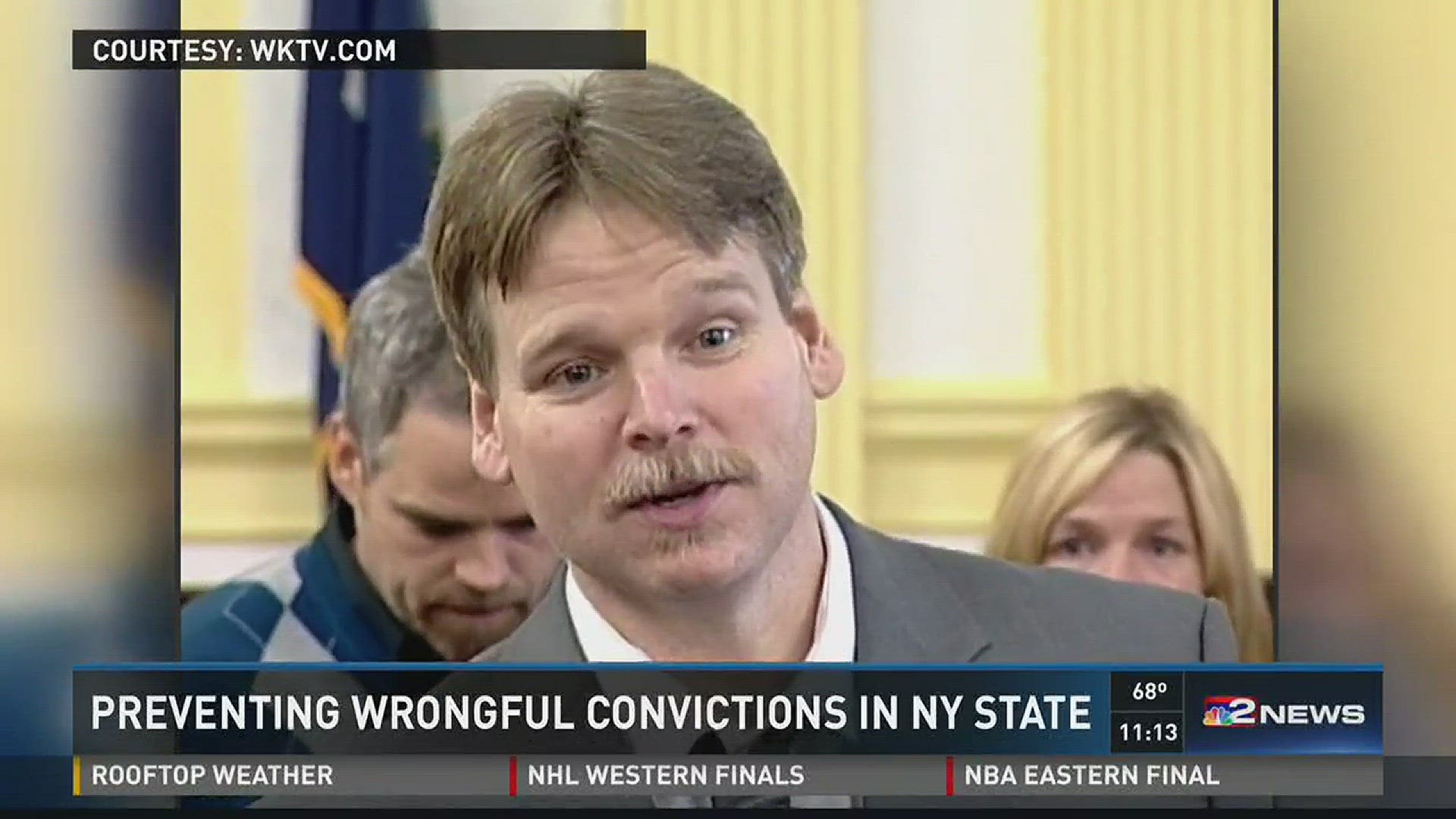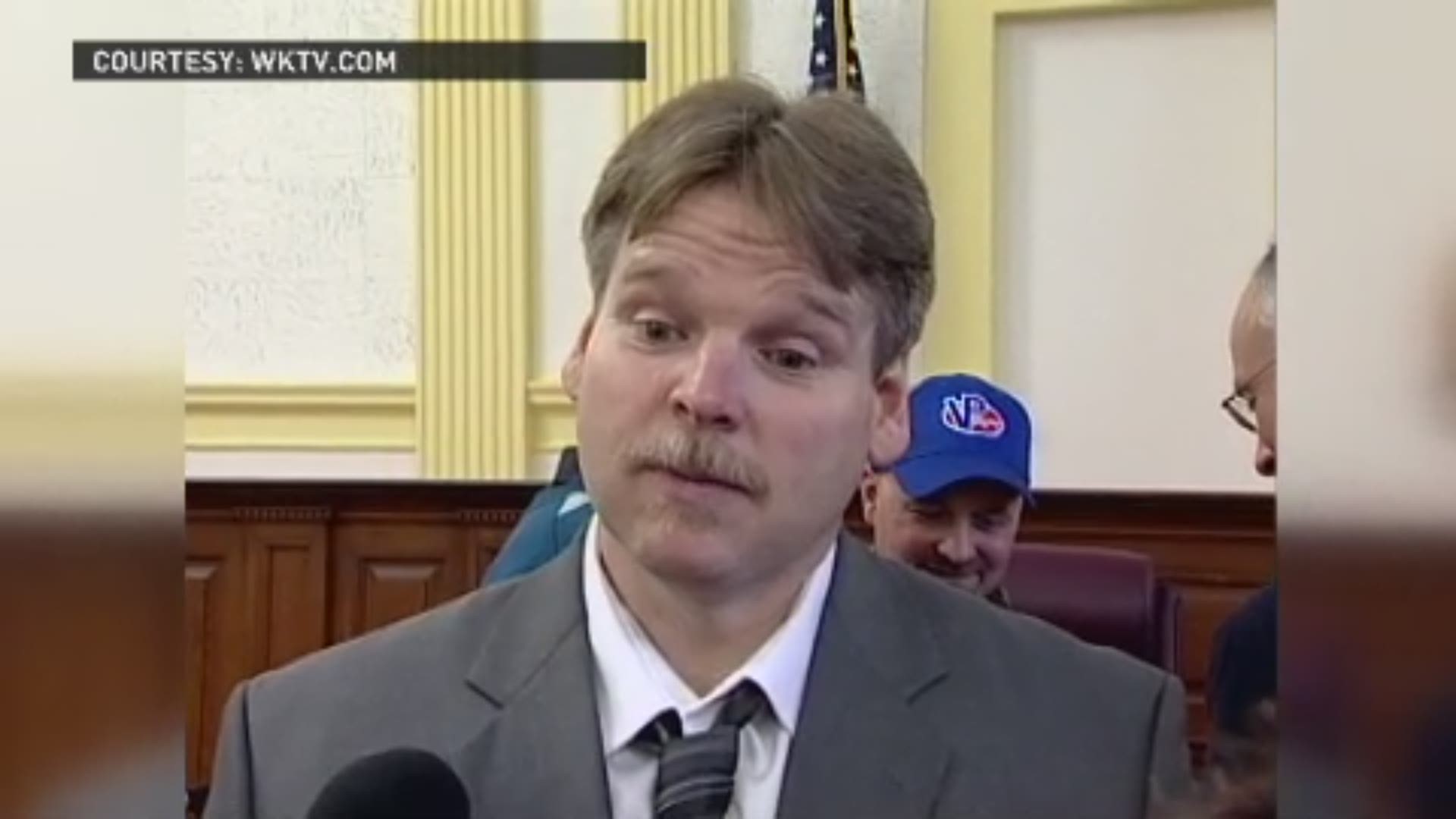The video version of the story, seen above, was shot and edited by 2 On Your Side photojournalist Franco Ardito.
MARCY, N.Y. - After spending two decades in prison for a murder he didn't commit, Steven Barnes entered free society in 2008 having never owned a cell phone.
He didn't know what Facebook was. He had no email account. He needed computer training and a new copy of his birth certificate. He retook his driver's test.
When the judge set Barnes free, two days before Thanksgiving nearly eight years ago, this 42-year-old man looked around his small town of Marcy, near Utica, and hardly recognized his new world.
"Things were torn down, new buildings were built, the prices of everything went up," Barnes said. "I had to start my life over."
In 1989, a jury convicted Barnes for the murder of 16-year-old Kimberly Simon, basing their verdict on eyewitness testimony, a jailhouse informant and forensic evidence presented by the prosecution. Except the informant was lying. The eyewitnesses were wrong, too. Plus, the science was bogus— they’d call it “junk science” today and it’d never be allowed in a courtroom.

It wasn't until 2008, after the Innocence Project had gotten involved in Barnes' case, that new DNA evidence finally exonerated him. By that point, he'd already lost 20 years of his life, bouncing from prison to prison in some of the state's most notorious penitentiaries.
"I didn't celebrate holidays in prison, I didn't celebrate my birthday, I didn't really tell anybody good morning," Barnes said. "It was just a place where the strong survived and the weak get preyed on. I wouldn't wish it on my worst enemy."
Barnes is one of more than 200 exonerees in New York state to have been wrongfully convicted of a crime since 1989, according to the National Registry of Exonerations through the University of Michigan's Law School. There have been several high-profile cases in Western New York: Anthony Capozzi, Lynn DeJac, Jerome Thagard, Josue Ortiz and countless others.
Some of these wrongful convictions in New York are the product of past police practices and investigative procedures. Times have changed, certainly, and law enforcement and prosecutors don't conduct investigations the same way they did in, say, the 1980s, when a jury convicted Steven Barnes for a murder in which he had no involvement.
But the New York State Legislature has proposed major reforms to prevent wrongful convictions, and police departments themselves have voluntarily implemented new procedures to avoid catastrophic mistakes.
Barnes, who still lives in Marcy, has taken six trips to Albany to fight for criminal justice reform. His mother, Sylvia, is one of his top supporters and often accompanies him when he travels to the capitol or to Innocence Project functions.
Sylvia visited her son in prison every single weekend for nearly two decades.

"When they slam that iron prison gate, I'll never forget the sound. It's just so heart-wrenching," Sylvia said. "I don't want any family or family member to have to live through a nightmare that we had to live through."
LEGISLATIVE PROPOSALS
Lawmakers in New York have proposed reform bills several times over the years, but the legislation has never made its way to the Governor's desk. New York has not yet caught up with neighboring states, like Ohio, which passed comprehensive wrongful conviction reform in 2010.
However, State Senator Patrick Gallivan, a Republican from Elma, co-sponsors a Senate bill this session to add a few significant requirements to police investigations. The bill, which also has a Democratic co-sponsor, would set new best practice standards in two main areas: photo array identifications and police interviews.

For photo arrays -- which police show to witnesses during investigations to see if they can identify a suspect -- the legislation would require "double-blind" or "blinded" procedures. These terms mean an investigator conducting a photo array would not be allowed to know the identity of the suspect in the array, in order to eliminate any risk of unintentional bias.
"The idea is, that you try to get a police officer, detective, whatever it may be, somebody that is not connected to the case, to put it together and administer it to the potential witness," Gallivan said. "So that nobody can make an accusation that the law enforcement officer steered the individual in the wrong direction.”
In return, prosecutors could use a photo array identification in court as evidence against a defendant under this proposed bill. Currently, in the state of New York, photo arrays are not admissible in court. That’s a hindrance to prosecutors, particularly in upstate New York, where physical lineups with suspects are rarely conducted.
Secondly, the legislation co-sponsored by Gallivan would require police to video and audio record all interviews with witnesses and suspects in certain felony investigations (with some exceptions, like when equipment malfunctions or if a suspect is in a hospital). This could guard against false confessions by suspects, but it could also help police by creating irrefutable proof of statements made by defendants.
"Now we have the technology-- we can put procedures in place to help ensure against a bad accusation against a police officer," Gallivan said, "or, on that very rare occasion, there might be police misconduct. If you have procedures in place, you can prevent it."
In the 1980s, for example, police questioned Barnes for 12 hours.
"I asked for certain things during the interrogation-- like a phone call. And they said I never asked," Barnes said. "(Recordings) would bring that all into the open. You could see what was being said by the cops, what was being said by the witness, what was going on in that room... Instead of having cops in that room with the door closed."
Joseph Lentol, a downstate Democrat, sponsors this reform bill in the Assembly. It was referred to the Codes committee earlier this month. Lentol also sponsors a stronger bill, which would place sanctions on departments that do not follow the photo array or interview procedures.
The Assembly and Senate have not yet been able to come to a consensus, so the bills all remain in committee with the session nearing an end this June.
Even in the absence of a state law, many police departments have already implemented these reforms themselves.
NEW PROCEDURES
Michael Flaherty, the Erie County Acting District Attorney, supports Gallivan's legislation, along with the District Attorneys Association of New York, the New York State Bar Association and the Innocence Project.
According to Flaherty, all police departments in Erie County already use double-blind photo array procedures. A state grant also provided money for video recording technology to not only Buffalo Police, but also to many suburban departments.
The Buffalo Police Department's Sex Offense Squad and Homicide Squad both have access to the technology. The department's policy is to record all interviews in felony cases.
"In an ideal world, I'd like to see every interview recorded," Flaherty said. "We're soon going to look back on this as being so routine, and not even remember the days when we didn't have this technology."
The Niagara Falls Police Department also uses blinded arrays and video recording technology for interviews.
When showing arrays to witnesses, Detective Lieutenant John Conti said his department's investigators follow a script provided by the District Attorneys Association. That way, they have a uniform system of questioning witnesses, which could help prevent misidentification.
"So there's no question about how it was shown, or if there were any improprieties or inflections," Conti said.

Niagara Falls Police have two interview rooms in their headquarters, where they record all A-felony and B-felony cases at the very least. Conti said the recordings often helps investigators recall statements made by suspects. It's also easier for them to conduct interviews when they don't have to worry about scribbling every single note down on a notepad.
"When you go back and you have the video you can look back at, sometimes it helps piece things together and makes more sense once you get further into the investigation," Conti said. "It's very important that we use these principles as they've evolved, to be as exacting as possible, to get the right person charged with that crime. And not have the person who's wrongly convicted."
BUT WHAT ABOUT THE MONEY?
One potential roadblock with the legislation involves the funding of video technology. Take the Buffalo Police Department, for example. It currently has equipment for its Sex Offense Squad and Homicide Squad, but it has several district houses across the city. Under this legislation, Buffalo Police Lt. Jeff Rinaldo said each house would need technology-- and that would cost $6,000 per building.
Rinaldo said the department welcomes the technology with open arms, but it would probably need to seek outside funding if the legislation passes.
Kevin Kennedy, the president of the Buffalo Police Benevolent Association, said in an email that the funding could become a problem.
"In some situations, it is an unfunded mandate. We have district detectives that do not have video equipment or a video interview room available at the district level," Kennedy said.
Gallivan said the legislature made criminal justice funding available through the state budget, which did provide for video technology grants.
"And if it becomes necessary to provide some more funding, if the legislature deems this important, I think we have an obligation to include monies in next year's budget," Gallivan said, "so that police agencies can be properly equipped to ensure compliance with the new law."
FROM RECOMMENDATION TO LAW
In his own Central New York county, Steven Barnes successfully lobbied law enforcement to start recording most interviews in felony cases. He's encouraged by the willingness of law enforcement and prosecutors to adjust their protocol to prevent wrongful convictions.
But until it's the law, it's not enough for him, especially considering the fact that states like Ohio have already passed reform laws.
"Our neighboring states changed laws we're trying to do now, three, four, five years ago," Barnes said. "It's common sense."

Barnes has now been free for nearly eight years. He owns his own snowplowing business, works on other people's pools, and does a lot of traveling in his free time. Every morning, he hits the gym. And his mom, Sylvia, is always nearby.
"It's still surreal. It's been over seven years and every time he walks in the door, my heart still skips a beat because I can't believe he's free and our nightmare is over," Sylvia said.
Barnes stays in contact with the Innocence Project, which helped free him from prison. When the organization asks him for favors -- like granting an interview with 2 On Your Side -- he always obliges, because these days he's just happy to smell the fresh air outside of his home in Marcy.
"Every day I get up, it's like a holiday," Barnes said. "I got my life back."


